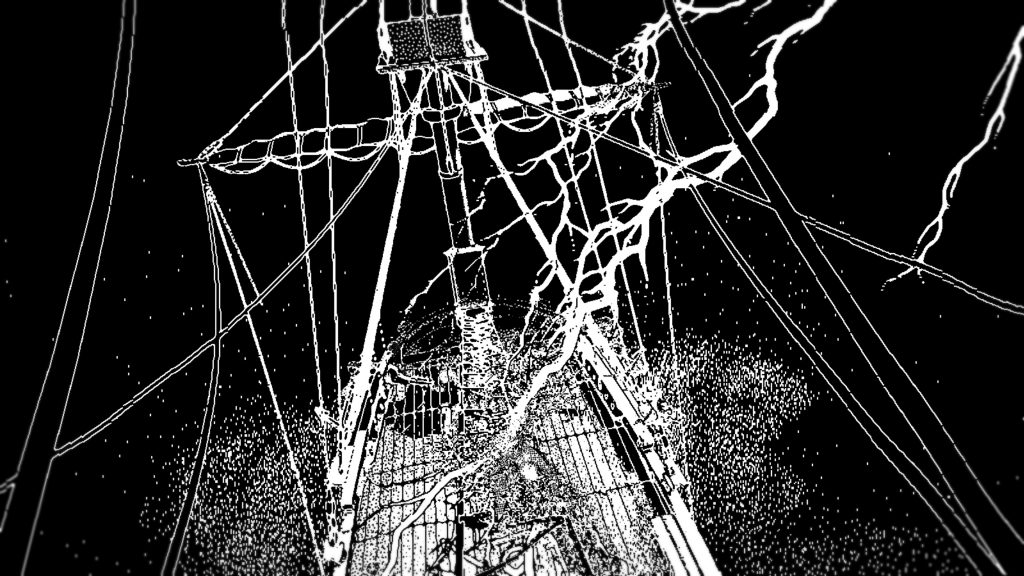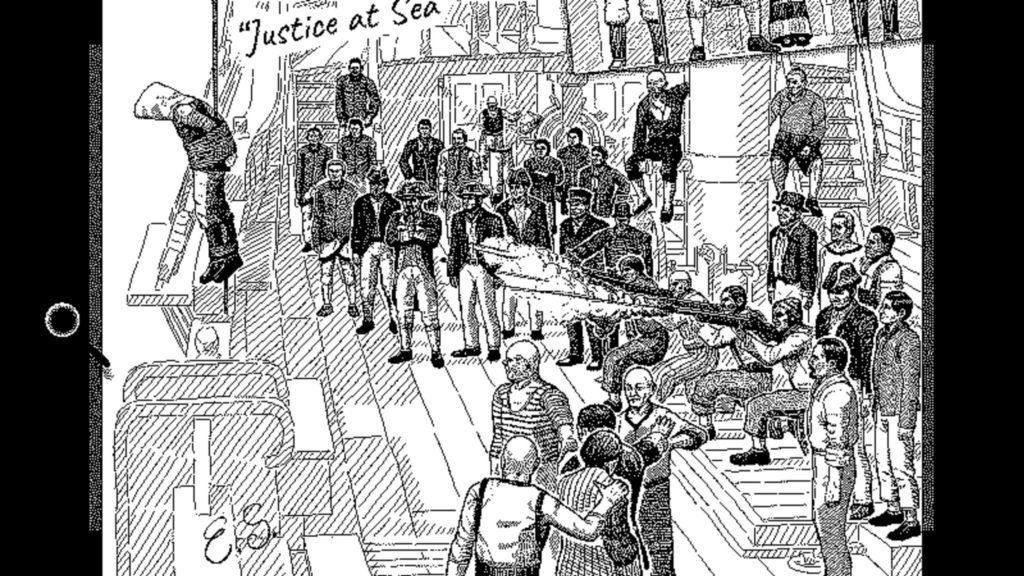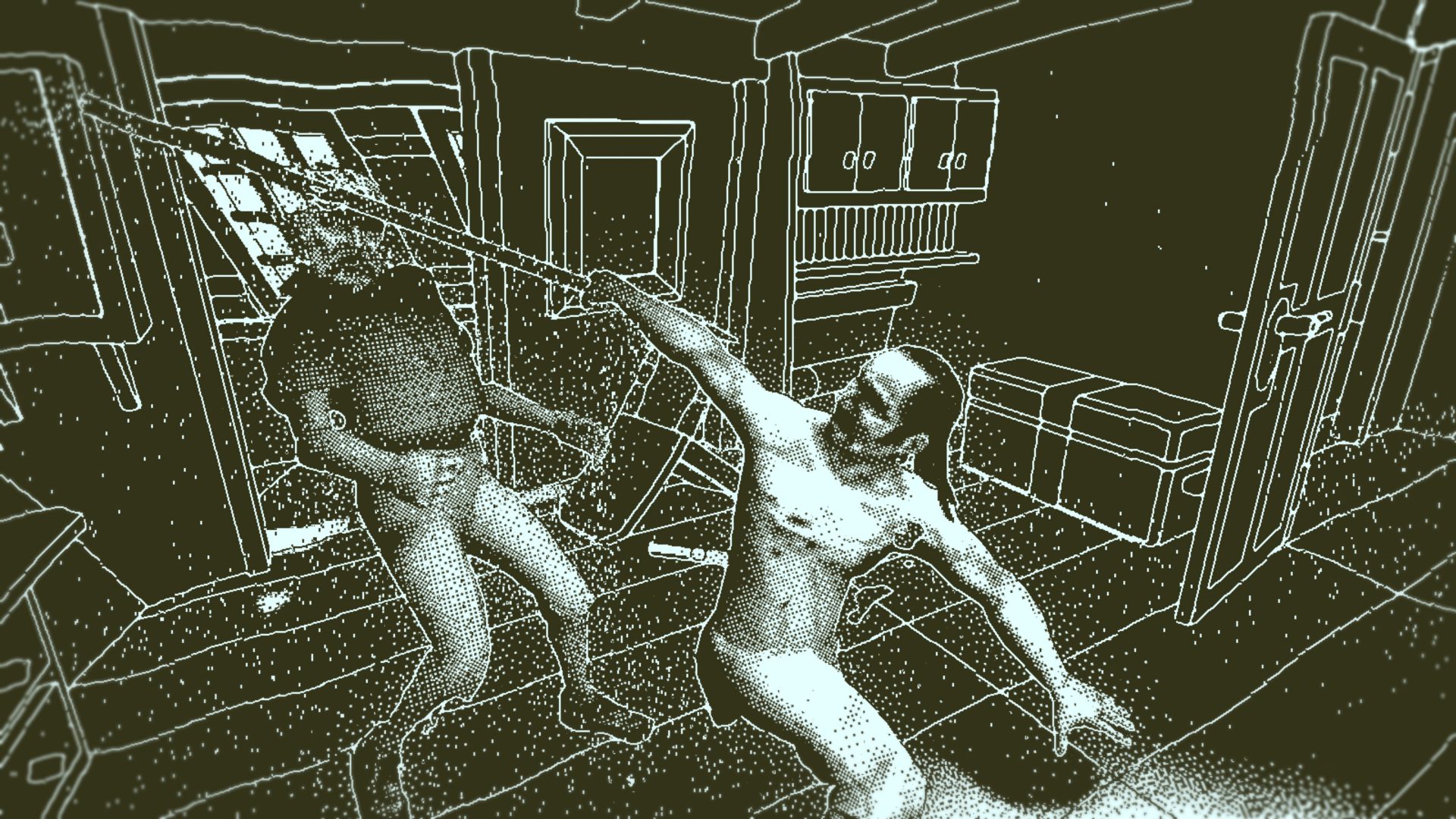Return of the Obra Dinn Review
Lucas Pope does it again.

When I was a child, I was tasked by a teacher to come up with a fictionalised account of what happened on the Marie Celeste, the ship that was discovered adrift and deserted in 1872. What I came up with was about as violent and shrouded in supernatural mystery as Return of the Obra Dinn, but much, much worse in every single way than the masterpiece Lucas Pope has produced on the same subject 15 years later. Indeed, what we have here is about as far from the scribblings of a slightly unhinged child as you can get; rather a brilliantly crafted, highly stylised, 60-sided beast of a murder mystery that deftly balances narrative, gameplay, and aesthetic to create something really quite special.
A typical foray into The Obra Dinn will start with you finding a corpse. This is usually straightforward, with only a few taking more than a couple of minutes for me to locate. Using your ‘memento mori’ – a magical pocket watch – you will be transported to the moments just before the victim died. A short audio cutscene will follow, and then, in all its 1-bit macabre glory, a freeze-frame of the death scene will appear, and you are free to walk around the scene and explore it. This is over pretty quickly, with the screen fading to black before the relevant page of the logbook is opened with some of the details filled in. You are then presented with the forever pre-eminent questions: who is this? And what fate befell them?

Return of The Obra Dinn’s aesthetic may seem idiosyncratic at first, but it’s surprisingly effective. Photorealism, or even pixel-art, would have made the game’s faces a difficult obstacle for Pope to overcome, and the 1-bit style allows Pope to create sufficient ambiguity in regards to people’s appearances. It may not be the prettiest indie ever made, but the art style does allow for scenes that might otherwise be gratuitously violent to be oddly artistic. Additionally, you can alter the color palette to break up some environments, which is a nice quality-of-life bonus.
The game, in essence, is a mix of Cluedo and Sudoku. Whilst it may seem like each fact can simply be ascertained by the scene, this is far from true. Instead, many details will only become retrospectively relevant or lead to any sort of conclusion once a suspect has been ruled out down the line. In its entirety, this sprawling murder-mystery is essentially a huge logic grid, with direct clues (such as characters saying the names of others) noticeably few and far between, forcing you to really clutch onto whatever you information you can ascertain.
The nationalities of the crew are a great example of this in microcosm. There are, for example, only a couple of Scotsmen on board, but this still makes naming the mysterious assailant impossible based on accent. Later, however, when one of them can be crossed off the list for one reason or another, you are able to identify the killer as only one Scotsman is left on the list.
In this way, Return of The Obra Dinn presents a perfect storm of conceptual simplicity and mechanical complexity. At no point are you under any doubt about what you’re doing or why, but actually solving the puzzle is pretty difficult, requiring you to make logical deductions (and often seemingly tenuous assumptions) in order to ascertain the facts. Of all the puzzle games I’ve ever played, this is the one that holds your hand the least but gives you the most independent access to the solution.

Explaining a puzzle game – in particular, this puzzle game – isn’t always easy, and I worry all my talk of logic grids, Sudoku and logical deductions has stripped away the sense that this is not just a challenging game, but a fun one. Well, don’t be mistaken, because the Obra Dinn is incredibly enjoyable. It’s the right level of challenge, but there’s also a great plot sewn into it, along with a morbid fascination to every scene. It’s also brilliantly paced, and the puzzles are more fun – and ingenious – than any others I’ve ever played.
The plot, like the blurred faces that initially populate the game, is something you have to work for and piece together yourself, to an extent. As is the case with the murders, it’s often clear what is happening, but unclear why. Whilst this can make the early stages of the game (especially the part on the gun deck) absolutely baffling, it’s a real incentive to keep playing and makes you consider not only what is on the pages of the logbook, but what is between the lines. Indeed, much of the story-telling lies between frames, in giving you enough to guess what happened in the gaps, and then have your imagination do the rest.

Indeed, the fact that Obra Dinn is the first game to have ever driven me to print out a docket of its contents on which to scrawl my own notes is a testament both to how sad a weekend at mine is and how involving the mystery-solving process of this game is. Although, it also suggests that the logbook had scope to be slightly more helpful as a note-taking tool.
Once you get to the bottom of the plot, it’s a fascinating tale too. Some pretty dark and mature turns mean that the level of violence remains tragic rather than becoming gratuitous as you become familiar with the lives that once inhabited the ship. Indeed, for a game all about death, there’s a hell of a lot of life aboard the Obra Dinn. Lucas Pope masterfully wields the powers of space and place in order to create the sense of a fully functional, cohesive, working ship. The way in which death frames sprawl beyond the immediate action to include bystanders, on-lookers, and even those entirely oblivious, hammers home the feel of process on the ship, even where there’s no movement.
The music and voice acting, along with the sonorous creaking of the ship, also help the atmosphere along, all being one of the better examples of their types I’ve seen in an indie game. The voice acting, which is often important to making crucial deductions, is spot on, whilst the music – complete with bells that sound like those you would find on a 1800s ship and a delightful violin (or is it a concertina?) – is perfectly in line with the game’s themes and mood.
After Papers, Please, Lucas Pope had set himself an incredibly high bar, but its fair to say he’s met it again. Return of The Obra Dinn is truly exceptional: one of those rare games that combine every individual facet of its design into one, perfectly cohesive whole.

